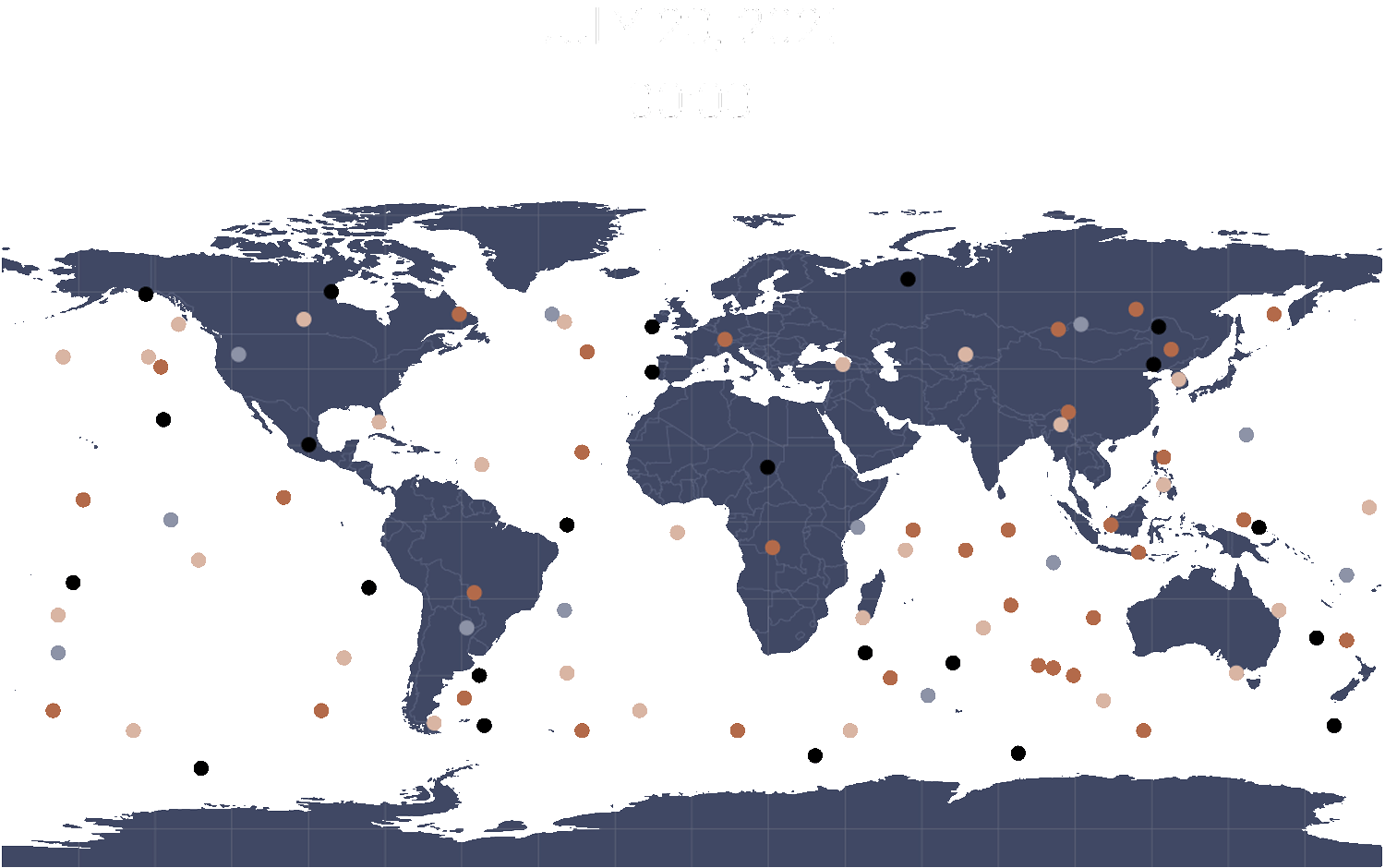


China’s global navigation satellite system
China recently joined an elite group by launching its own global navigation system, BeiDou, named after the Big Dipper asterism. But how does it stack up against the other major systems?
Where are the world’s satellites?


How do satellites orbit Earth?
There are essentially three types of Earth orbits: low Earth orbit (LEO), medium Earth orbit (MEO) and high Earth orbit (HEO), which includes the geosynchronous equatorial orbit (GEO).
LEO starts just above the top of the atmosphere, while HEO begins about one-tenth of the way to the moon. The velocity at which a satellite orbits the Earth is determined by the Earth’s gravitational pull, hence the further a satellite is from Earth, the slower it will move.
Weather and communications satellites tend to operate in HEO, further away from the Earth’s surface. Navigation and speciality satellites designed to monitor specific regions tend to use MEO. Scientific satellites, such as Nasa’s Earth Observing System fleet, will have a low Earth orbit.
Scroll to compare the orbit height of China’s BeiDou Navigation Satellite System (BDS) to America’s Global Positioning System (GPS), Russia’s Global Navigation Satellite System (Glonass), and the European Union’s Galileo.
Three-step development strategy
The China National Space Administration reports BDS was developed in three stages.

BDS-1
BeiDou launched three geosynchronous equatorial orbit (GEO) satellites from 2000 to 2003 to provide China – and surrounding regions – with its own navigation system. China became the third country to build its own satellite navigation system, after the United States and Russia.

BDS-2
Over the next eight years, between 2004 and 2012, China created a mixed constellation of 14 satellites which was able to cover the Asia-Pacific region. Five were GEO satellites, five inclined geosynchronous orbit (IGSO) satellites and four MEO satellites.

BDS-3
On June 23, 2020, a Long March-3B rocket blasted off from the Xichang satellite launch centre in southwest China's Sichuan Province carrying the satellite which would complete the BDS-3 system, China’s own global navigation system. It consists of a total of 30 satellites, including 24 MEO satellites, three IGSO satellites and three GEO satellites.

BDS-1
BeiDou launched three geosynchronous equatorial orbit (GEO) satellites from 2000 to 2003 to provide China – and surrounding regions – with its own navigation system. China became the third country to build its own satellite navigation system, after the United States and Russia.

BDS-2
Over the next eight years, between 2004 and 2012, China created a mixed constellation of 14 satellites which was able to cover the Asia-Pacific region. Five were GEO satellites, five inclined geosynchronous orbit (IGSO) satellites and four MEO satellites.

BDS-3
On June 23, 2020, a Long March-3B rocket blasted off from the Xichang satellite launch centre in southwest China's Sichuan Province carrying the satellite which would complete the BDS-3 system, China’s own global navigation system. It consists of a total of 30 satellites, including 24 MEO satellites, three IGSO satellites and three GEO satellites.
BEIDOU SATELLITE LAUNCHES
Ground-based augmentation system
By the end of 2019, China had 155 framework reference stations and more than 2,200 regional stations operating across the country to ensure the system’s accuracy. The framework reference stations provide real-time navigation services at metre- and decimetre-level, while the regional stations are capable of offering services at centimetre-level. Here we take a look at the distribution of framework reference stations in China.
Framework reference stations
How accurate is BDS compared to Glonass, GPS and Galileo?
Market turnover
The past 10 years have seen a boom in China’s satellite navigation industry. According to a white paper published by the Chinese government this year, the overall value of China’s navigation and positioning-based services reached 345 billion yuan (US$49.8 billion) by 2019 and employed more than 500,000 people through related companies or institutions.
Creative Director Darren Long.
Sources: BeiDou official website; International GNSS Monitoring & Assessment System; European Space Agency; NASA earth observatory; Global Navigation Satellite System and Location-Based Services Association of China; Test and Assessment Research Center of China Satellite Navigation Office; Information and Analysis Center for Positioning, Navigation and Timing, Korolyov, Russia; GPS official website